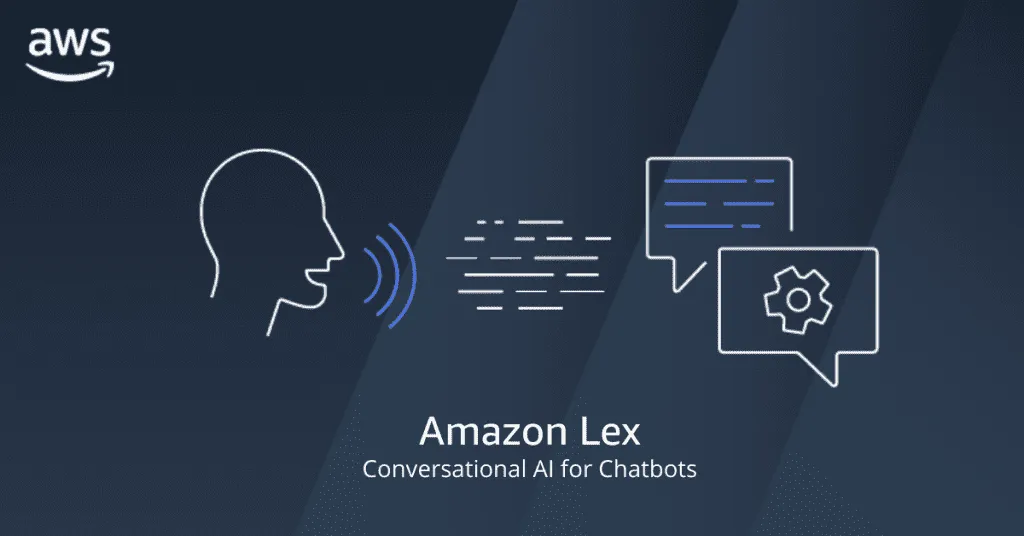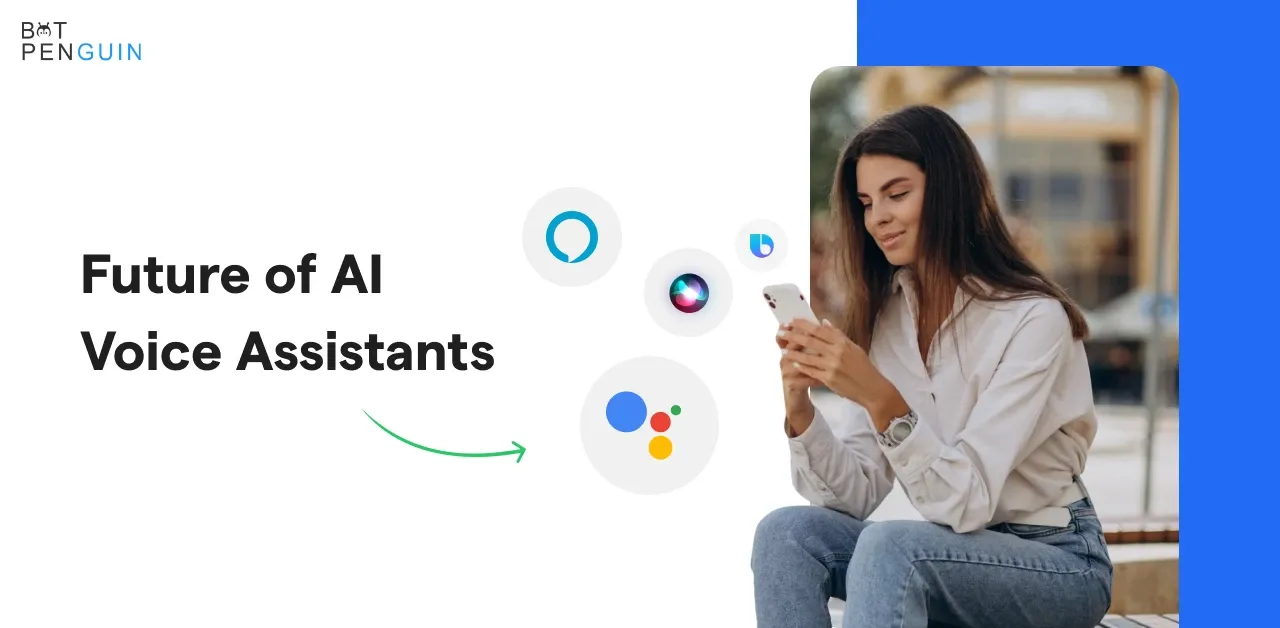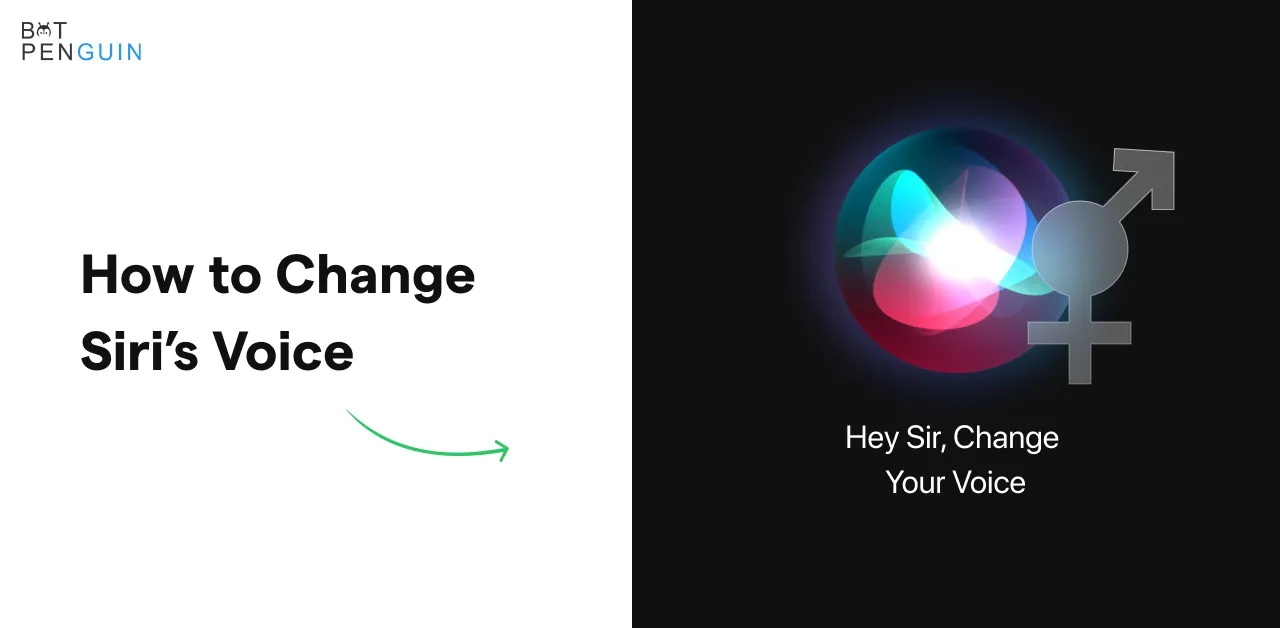Introduction
According to a recent report by Grand View Research, Inc., the intelligent virtual assistant market is projected to reach a value of $14.10 billion by the year 2030. This significant growth can be attributed to the increasing adoption of virtual assistants across various industries, including healthcare, retail, and banking, among others.
If you've ever wondered how businesses create those intelligent chatbots and virtual assistants that seem to understand us so effortlessly, you're in for learning. In this blog post, we'll take you on a journey through Amazon Lex virtual assistant, giving you a quick overview of its capabilities and why it's revolutionizing how we interact with technology.
Whether answering frequently asked questions, processing orders, or guiding users through complex tasks, Amazon Lex has covered you.
With Amazon Lex, businesses can tap into the same natural language understanding and interaction level to create customized conversational experiences.
Let's get this party started!
What is Amazon Lex?
So you've heard about Amazon Lex and are curious to learn more? Well, you've come to the right place! Let's dive into the fascinating world of Amazon Lex and uncover what makes it such a game-changer.
Amazon Lex is an effective and innovative service offered by Amazon Web Services (AWS) that allows you to build conversational interfaces using chatbots. It leverages advanced natural language understanding (NLU) capabilities to enable human-like interactions between users and applications.
Simply, it's like having a virtual assistant to understand and respond to your queries conversationally.
You can access a wide range of features with Amazon Lex, making it a standout choice for chatbot development. It offers automatic speech recognition (ASR) and text-to-speech (TTS) capabilities, which means your chatbots can understand spoken language and respond in a human-like voice.

Why should you consider using Amazon Lex?
Don't rely on guesswork when it comes to choosing Amazon Lex. Here are some key factors that you can consider before using Amazon Lex.
Streamlining Customer Interactions with Amazon Lex
One of the key advantages of Amazon Lex is its ability to streamline customer interactions. By implementing chatbots powered by Amazon Lex, businesses can offer 24/7 support, reduce wait times, and respond instantly to customer queries with a virtual assistant. This leads to improved customer satisfaction and retention.
Enhancing User Experience with Amazon Lex virtual assistant
You can create chatbots with Amazon Lex that deliver a personalized and intuitive user experience. Chatbots built with Amazon Lex can guide users through various tasks, offer recommendations, and provide helpful information by understanding user intent and providing relevant responses. This increases the overall user experience and leaves a lasting impression.
Improving Customer Support with Amazon Lex virtual assistant
Customer support teams can benefit greatly from Amazon Lex. Chatbots built with Amazon Lex can handle routine inquiries, gather customer information, and provide automated responses. This frees human agents to focus on more complex and critical issues, resulting in faster response times and improved efficiency.
Who can benefit from Amazon Lex?
Now that we've explored the advantages of Amazon Lex let's look at who can benefit from this powerful virtual assistant.
Businesses in Various Industries
Amazon Lex is versatile and can be applied to various industries. Whether you're in e-commerce, healthcare, finance, or any other sector, Amazon Lex can help streamline customer interactions, automate processes, and provide a more efficient way to engage with users.
Customer Service Teams
Customer service teams can leverage Amazon Lex to enhance their support operations. By offloading repetitive and routine inquiries to chatbots, agents can focus on complex issues, provide personalized assistance, and deliver exceptional customer service.
Developers and Programmers
For developers and programmers, Amazon Lex opens up a world of possibilities. Its comprehensive set of tools and resources enables the creation of highly customizable and intelligent chatbots. Whether you are just starting your coding journey, Amazon Lex provides an accessible platform to showcase your skills and build cutting-edge conversational interfaces.
How does Amazon Lex work?
Now, look at how Amazon Lex works and the key components that power Amazon Lex's virtual assistant capabilities.
Natural Language Understanding (NLU) Capabilities
At the heart of Amazon Lex are its advanced natural language understanding (NLU) capabilities. These capabilities allow virtual assistant to comprehend and interpret user input conversationally. Amazon Lex can understand user intent and provide accurate responses by analyzing the context and extracting relevant information.
Intents and Slots
To enable meaningful conversations, Amazon Lex uses intents and slots. Intents represent the goal or purpose of a user's input, while slots capture specific pieces of information. For instance, if a user wants to book a hotel, the intent would be "BookHotel," and the slots would include details like check-in date, check-out date, and the number of guests.
Dialog Management
Dialog management is a crucial aspect of Amazon Lex. It allows chatbots to engage in dynamic conversations, ask clarifying questions, and guide users toward their desired outcomes. Dialog management ensures a smooth and natural flow of communication, creating a more engaging and interactive experience.
The Best Practices for Amazon Lex as a virtual assistant
Amazon Lex, the powerful chatbot platform, offers many features and functionalities to create effective conversational experiences. Let's dive into some best practices for designing, training, and monitoring your chatbots to make the most of this remarkable tool.
Designing Effective Conversation Flows
Creating intuitive and user-friendly conversation flows is crucial for a seamless chatbot experience. Here are some key tips to keep in mind:
- Define clear intents: Start by identifying the main goals of your chatbot. Define intents that represent the different actions or inquiries users may have.
- Craft engaging prompts: Design concise, conversational, and tailored to the user's context. Engage users with personalized messages and ensure a smooth transition between conversational turns.
- Handle errors gracefully: Anticipate potential mistakes or misunderstandings and design error-handling prompts that guide users back on track without causing frustration.
Training and Fine-Tuning Your Chatbot
Training your chatbot is an ongoing process. Consider these strategies to improve its performance:
- Provide diverse training data: Ensure your data covers many user queries and intents. Include both common and edge cases to enhance accuracy.
- Iterate and test: Continuously refine your chatbot by testing and analyzing user interactions. Identify areas where it falls short and make necessary adjustments to improve performance.
- Use slot elicitation techniques: Employ slot elicitation to gather missing information from users, prompting them to provide specific details and ensuring a comprehensive conversation.
Monitoring and Analyzing Performance
To ensure your chatbot is delivering exceptional results, adopt these monitoring practices:
- Track key performance metrics: Monitor intent accuracy, slot elicitation rate, and user satisfaction. This data provides valuable insights into your chatbot's effectiveness and helps identify areas for improvement.
- Leverage user feedback: Encourage users to provide feedback after interacting with the chatbot. Analyze their comments and suggestions to gain valuable insights and enhance the user experience.
Limitations and Challenges of Amazon Lex
While Amazon Lex offers incredible capabilities, knowing its limitations and challenges is essential. Let's explore a few key considerations:
Understanding User Intent Accurately
Accurately understanding user intent can be challenging, especially when queries are ambiguous or context-dependent. Designing effective conversational flows and refining your training data can help mitigate this issue.
Handling Complex Conversations
Amazon Lex may struggle with complex conversations involving multiple turns or branching logic. Carefully design your chatbot's conversation flows to handle such scenarios and ensure a smooth user experience.
Language and Regional Limitations
Currently, Amazon Lex supports a limited set of languages and regions. Ensure that your target audience aligns with the supported languages to maximize the effectiveness of your chatbot.
Comparison with Other Chatbot Platforms
To gain a holistic understanding of chatbot platforms, it's essential to compare Amazon Lex with similar tools. Let's explore some notable contrasts:
Contrasting Amazon Lex with Similar Tools
Compare Amazon Lex's features, pricing, integrations, and scalability with chatbot platforms like Dialogflow, Watson Assistant, or Microsoft Bot Framework. Consider factors that align with your specific requirements to make an informed decision.
Strengths and Weaknesses
Assess the strengths and weaknesses of Amazon Lex about other platforms. For example, Lex's seamless integration with AWS services may be an advantage, while limited language support could be a potential drawback.
Real-World Examples of Amazon Lex in Action
Amazon Lex finds practical applications in various domains. Here are a few examples:
Customer Support Chatbots
Companies leverage Amazon Lex to build customer support chatbots that handle common inquiries, provide assistance, and direct users to relevant resources. These chatbots streamline support processes, improve response times, and enhance customer satisfaction.
Virtual Assistants for Online Services
Amazon Lex powers virtual assistants in online services such as e-commerce platforms, travel booking websites, and food delivery applications. These assistants enable users to make reservations, find products, and receive personalized recommendations through natural language interactions.
Voice-Enabled Applications
With its integration with Amazon Polly and Amazon Alexa, Amazon Lex enables developers to create voice-enabled applications. These applications range from voice-activated customer service bots to voice-controlled smart home systems.
Conclusion
Amazon Lex is a powerful and versatile tool that allows you to create engaging conversational interfaces for your applications. Its advanced natural language understanding and speech recognition capabilities make it an excellent choice for businesses looking to enhance their customer interactions and streamline processes.
However, if you're seeking an alternative AI chatbot platform that is easy to set up, customizable, and cost-effective, consider BotPenguin. With its user-friendly interface, seamless integration, and robust features, BotPenguin can help you automate customer interactions, generate leads, and provide personalized support around the clock.
So, why not explore the possibilities that BotPenguin has to offer? Take the first step towards revolutionizing your customer support ecosystem and elevating your business to new heights of success.
Frequently Asked Questions
What is Amazon Lex?
Amazon Lex is a service offered by Amazon Web Services (AWS) that enables businesses to build conversational chatbots and virtual assistants using natural language understanding (NLU) technology.
How does Amazon Lex work?
Amazon Lex uses machine learning algorithms to process and understand user inputs, allowing the chatbot to interpret and respond to natural language queries, providing conversational experiences.
Can Amazon Lex be integrated with other applications?
Yes, Amazon Lex can be easily integrated with various applications and platforms, including websites, mobile apps, and messaging channels, to provide interactive conversational interfaces.
Does Amazon Lex support multiple languages?
Yes, Amazon Lex supports multiple languages, enabling businesses to create chatbots that can interact with users in their preferred languages, making it a versatile solution for global audiences.
Can Amazon Lex handle complex conversations?
Absolutely! Amazon Lex is designed to handle complex conversations, allowing businesses to build sophisticated chatbots that can understand and respond to intricate user queries.
Is Amazon Lex suitable for both text and voice interactions?
Yes, Amazon Lex supports both text and voice interactions, giving users the flexibility to interact with the chatbot using either typed messages or spoken commands.
Can Amazon Lex be trained to understand industry-specific terminology?
Certainly! Amazon Lex can be trained to understand industry-specific terminology and jargon, making it suitable for various domains like healthcare, finance, and e-commerce.
Does Amazon Lex offer built-in analytics and insights?
Yes, Amazon Lex provides built-in analytics and insights, allowing businesses to track user interactions, monitor performance, and gain valuable insights to improve the chatbot experience.
Can Amazon Lex be used for both customer support and internal applications?
Absolutely! Amazon Lex can be utilized for both customer-facing applications, such as customer support chatbots, as well as internal applications, like employee self-service portals.
Is Amazon Lex a scalable solution?
Yes, Amazon Lex is highly scalable, capable of handling a large volume of concurrent conversations, ensuring smooth performance and responsiveness as user demand increases.



